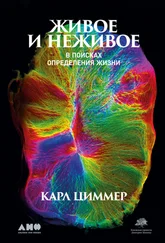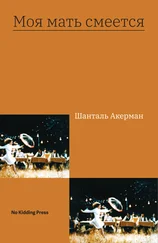Greenfieldboyce, Nell. 2017. “Fate of Irish Giant’s Bones Rekindles Debate over Rights After Death.” NPR All Things Considered, March 13.
Griesemer, James R. 2005. “The Informational Gene and the Substantial Body: On the Generalization of Evolutionary Theory by Abstraction.” In Idealization XII: Correcting the Model. Idealization and Abstraction in the Sciences. Edited by Martin R. Jones and Nancy Cartwright. Amsterdam: Rodopi.
Griffith, Malachi, Christopher A. Miller, Obi L. Griffith, Kilannin Krysiak, Zachary L., Skidmore, Avinash Ramu, Jason R. Walker, and others. 2015. “Optimizing Cancer Genome Sequencing and Analysis.” Cell Systems 1: 210–23.
Grognet, Pierre, Hervé Lalucque, Fabienne Malagnac, and Philippe Silar. 2014. “Genes That Bias Mendelian Segregation.” PLOS Genetics 10: el004387.
Grudnik, Jennifer L., and John H. Kranzler. 2001. “Meta-Analysis of the Relationship Between Intelligence and Inspection Time.” Intelligence 29: 523–35.
Grüneberg, Hans. 1967. “Sex-linked Genes in Man and the Lyon Hypothesis.” Annals of Human Genetics 30: 239–57.
Guevara-Aguirre, Jaime, Priya Balasubramanian, Marco Guevara-Aguirre, Min Wei, Federica Madia, Chia-Wei Cheng, David Hwang, and others. 2011. “Growth Hormone Receptor Deficiency Is Associated with a Major Reduction in Pro-Aging Signaling, Cancer, and Diabetes in Humans.” Science Translational Medicine 3: 70ra13.
Gull, Keith. 2010. “Boveri and Cancer: Prescient Views of Molecular Mechanisms.” Notes and Records of the Royal Society 64: 185–87.
Guo, Fan, Liying Yan, Hongshan Guo, Lin Li, Boqiang Hu, Yangyu Zhao, Jun Yong, and others. 2015. “The Transcriptome and DNA Methylome Landscapes of Human Primordial Germ Cells.” Cell 161: 1437–52.
Gustafsson, A. 1979. “Linnaeus’ Peloria: The History of a Monster.” Theoretical and Applied Genetics 54: 241–48.
Guyot, A., and С. C. Felton. 1852. The Earth and Man: Or, Physical Geography in Its Relation to the History of Mankind. London: J. W. Parker and Son.
Hadhazy, Adam. 2015. “Will Humans Keep Getting Taller?” BBC Future. May 14.
Haggard, Howard Wilcox, and E. M. Jellinek. 1942. Alcohol Explored. Garden City, NY: Doubleday, Doran & Company.
Haidle, Miriam N., Nicholas J. Conard, and Michael Bolus, eds. 2016. The Nature of Culture: Based on an Interdisciplinary Symposium “The Nature of Culture,” Tubingen, Germany. Dordecht: Springer.
Haier, Richard J. 2017. The Neuroscience of Intelligence. New York: Cambridge University Press.
Haig, David. 2016. “Intracellular Evolution of Mitochondrial DNA (mtDNA) and the Tragedy of the Cytoplasmic Commons.” BioEssays 38. doi: 10.1002/bies.201600003.
Hains, James H., Gary R. Carter, Scott D. Kraus, Charles A. Mayo, and Howard E. Winn. 1982.”Feeding Behavior of the Humpback Whale, Megaptera novaeangliae, in the Western North Atlantic.” Fishery Bulletin 80: 259–68.
Haley, Alex. 1972. “My Furthest-Back Person – The African.” New York Times Magazine, July 16.
Hall, Stephen S. 2006. Size Matters: How Height Affects the Health, Happiness, and Success of Boys – and the Men They Become. Boston: Houghton Mifflin.
Hamilton, Garry. 2015. “The Hidden Risks for ‘Three-Person’ Babies.” Nature 525: 444.
Hammer, Michael F., Doron M. Behar, Tatiana M. Karafet, Fernando L. Mendez, Brian Hallmark, Tamar Erez, Lev A. Zhivotovsky, Saharon Rosset, and Karl Skorecki. 2009.”Extended Y Chromosome Haplotypes Resolve Multiple and Unique Lineages of the Jewish Priesthood.” Human Genetics 126: 707–17.
________, Karl Skorecki, Sara Selig, Shraga Blazer, Bruce Rappaport, Robert Bradman, Neil Bradman, P. J. Waburton, and Monic Ismajlowicz. 1997. “Y Chromosomes of Jewish Priests.” Nature 385: 3.
Hamzelou, Jessica. 2016. “World’s First Baby Born with New ‘3 Parent’ Technique.” New Scientist, September 27.
Handyside, A. H., E. H. Kontogianni, K. Hardy, and R. M. L. Winston. 1990. “Pregnancies from Biopsied Human Preimplantation Embryos Sexed by Y-Specific DNA Amplification.” Nature 344: 768–70.
Haneda, Yata, and Frederick I. Tsuji. 1971. “Light Production in the Luminous Fishes Photoblepharon and Anomalops from the Banda Islands.” Science 173: 143–45.
Happle. Rudolf. 2002. “New Aspects of Cutaneous Mosaicism.” Journal of Dermatology 29: 681–92.
Harding, Сагу O. 2017.”Gene and Cell Therapy for Inborn Errors of Metabolism.” In Inherited Metabolic Diseases. Edited by G. Hoffmann. Berlin: Springer-Verlag.
Harper, Peter S. 1992. “Eugenics, Human Genetics and Human Failings: The Eugenics Society, Its Sources and Its Critics in Britain.” Journal of Medical Genetics 29: 440.
________. 2008. A Short History of Medical Genetics. Oxford: Oxford University Press.
________. 2011. “Mary Lyon and the Hypothesis of Random X Chromosome Inactivation.” Human Genetics 130: 169–74.
Harris, Harry. 1974. “Lionel Sharpies Penrose (1898-1972)” Journal of Medical Genetics 11: 1–24.
Harris, Henry. 1999. The Birth of the Cell. New Haven: Yale University Press.
Harris, Kelley, and Rasmus Nielsen. 2016. “The Genetic Cost of Neanderthal Introgression.” Genetics 203: 881–91.
Harris, Theodore F. 1969. Pearl S. Buck: A Biograpahy. New York: John Day.
Harrison, Ross G. 1937. “Embryology and Its Relations.” Science 85: 369–74.
Hart, Sara A. 2016. “Precision Education Initiative: Moving Toward Personalized Education.” Mind, Brain, and Education 10: 209–11.
Hatfield, A. 2015.”Delineating Cancer Evolution with Single-Cell Sequencing.” Science Translational Medicine 7: 296fs29.
Hatton, T. J. 2014. “How Have Europeans Grown So Tall?” Oxford Economic Papers 66: 349–72.
Haworth, С. M. A., M. J. Wright, M. Luciano, N. G. Martin, E. J. C. de Gcus, С. E. M. van Beijsterveldt, M. Bartels, and others. 2010. “The Heritability of General Cognitive Ability Increases Linearly from Childhood to Young Adulthood.” Molecular Psychiatry 15: 1112–20.
Hayashi, Katsuhiko, Sugako Ogushi, Kazuki Kurimoto, So Shimamoto, Hiroshi Ohta, and Mitinori Saitou. 2012. “Offspring from Oocytes Derived from in Vitro Primordial Germ Cell-like Cells in Mice.” Science 338: 971–97.
Haygood, M. G., В. M. Tebo, and К. H. Nealson. 1984. “Luminous Bacteria of a Monocentrid Fish (Monocentris japonicus) and Two Anomalopid Fishes (Photoblepharon palpebratus and Kryptophanaron alfredi): Population Sizes and Growth within the Light Organs, and Ratesof Release into the Seawater.” Marine Biology 78: 249–54.
Hayman, John, Gonzalo Alvarez, Francisco C. Ceballos, and Tim M. Berra. 2017. “The Illnessesof Charles Darwin and His Children: A Lesson in Consanguinity.” Biological journal of the Linnean Society 121, no. 2. doi: 10.1093/biolinnean/blw04l.
Haynes, Stephen R. 2007. Noah’s Curse: The Biblical Justification of American Slavery. Oxford: Oxford University Press.
Heard, Edith, and Robert A. Martienssen. 2014. “Transgenerational Epigenetic Inheritance: Myths and Mechanisms.” Cell 157: 95–109.
Hearnshaw, L. S. 1979. Cyril Burt, Psychologist. Ithaca, NY: Cornell University Press.
Heim, Sverre. 2014. “Boveri at 100: Boveri, Chromosomes and Cancer.” Journal of Pathology 234: 138–41.
Hellenthal, Garrett, George B. J. Busby, Gavin Band, James F. Wilson, Cristian Capelli, Daniel Falush, and Simon Myers. 2014. “A Genetic Atlas of Human Admixture History.” Science 343: 747–51.
Читать дальше
![Карл Циммер Она смеется, как мать [Могущество и причуды наследственности] [litres] обложка книги](/books/406077/karl-cimmer-ona-smeetsya-kak-mat-moguchestvo-i-pr-cover.webp)

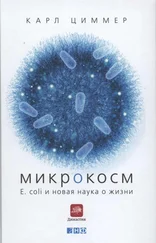
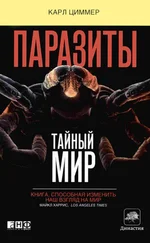

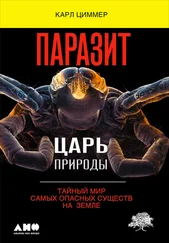
![Карл Циммер - Паразит – царь природы [Тайный мир самых опасных существ на Земле] [litres]](/books/396828/karl-cimmer-parazit-car-prirody-tajnyj-mir-sam-thumb.webp)
![Шалини Боланд - Тайная мать [litres]](/books/414707/shalini-boland-tajnaya-mat-litres-thumb.webp)
![Александр Донских - Отец и мать [litres]](/books/415697/aleksandr-donskih-otec-i-mat-litres-thumb.webp)
![Евгений Гаглоев - Верховная Мать Змей [litres]](/books/429235/evgenij-gagloev-verhovnaya-mat-zmej-litres-thumb.webp)
